Intro
Discover 5 ways kidney artery stenosis affects health, including narrowed arteries, high blood pressure, and kidney damage, through minimally invasive treatments and lifestyle changes, improving renal function and overall well-being.
Kidney artery stenosis is a condition where the arteries that supply blood to the kidneys become narrowed, leading to reduced blood flow and potentially serious health consequences. This condition can lead to high blood pressure, kidney damage, and even kidney failure if left untreated. Understanding the causes, symptoms, and treatment options for kidney artery stenosis is crucial for individuals at risk and those already diagnosed with the condition.
The importance of addressing kidney artery stenosis cannot be overstated. The kidneys play a vital role in filtering waste from the blood, regulating blood pressure, and maintaining electrolyte balance. When the arteries supplying the kidneys become narrowed, it can lead to a decrease in kidney function, ultimately affecting overall health. Recognizing the signs and symptoms of kidney artery stenosis and seeking medical attention promptly is key to preventing long-term damage.
Kidney artery stenosis can be caused by a variety of factors, including atherosclerosis, which is the buildup of plaque in the arteries, fibromuscular dysplasia, a condition that affects the medium and large arteries, and other less common causes. The condition can be asymptomatic in its early stages, making regular check-ups and screenings crucial for early detection. As the condition progresses, symptoms may include high blood pressure that is difficult to control, kidney failure, and in severe cases, pulmonary edema. Understanding the risk factors and taking preventive measures can significantly reduce the likelihood of developing kidney artery stenosis.
Kidney Artery Stenosis Causes and Risk Factors
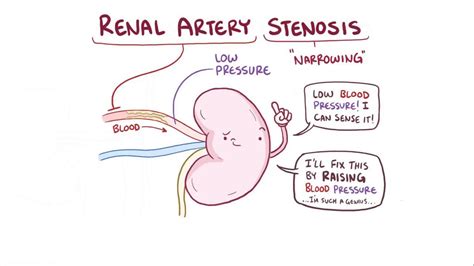
Understanding Atherosclerotic Kidney Artery Stenosis
Atherosclerotic kidney artery stenosis is a result of the gradual buildup of plaque in the renal arteries. This process can lead to the narrowing of the arteries, reducing blood flow to the kidneys. The plaque is composed of fat, cholesterol, calcium, and other substances found in the blood. Over time, the plaque can harden and narrow the arteries, leading to reduced kidney function. Factors that increase the risk of atherosclerosis, such as high blood pressure, high cholesterol, and smoking, also increase the risk of developing atherosclerotic kidney artery stenosis.Symptoms and Diagnosis of Kidney Artery Stenosis
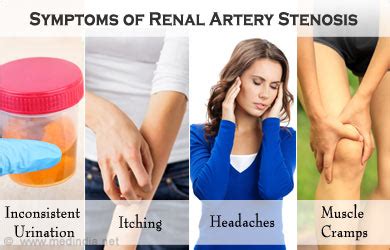
Diagnostic Tests for Kidney Artery Stenosis
Diagnostic tests play a crucial role in confirming the presence of kidney artery stenosis. Doppler ultrasound is a non-invasive test that uses sound waves to evaluate blood flow through the renal arteries. CT angiography provides detailed images of the arteries and can help identify any blockages. MRA is another non-invasive test that uses magnetic fields and radio waves to produce detailed images of the blood vessels. These tests can help determine the severity of the stenosis and guide treatment decisions.Treatment Options for Kidney Artery Stenosis
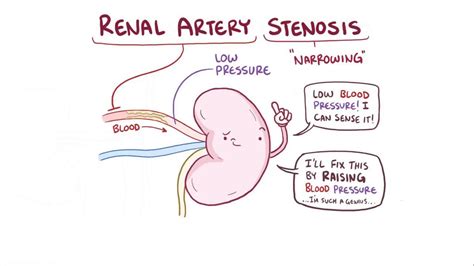
Medications for Kidney Artery Stenosis
Medications play a crucial role in managing kidney artery stenosis, particularly in the early stages. Anti-hypertensive medications are used to control high blood pressure, and statins may be prescribed to lower cholesterol levels and reduce the risk of further plaque buildup. In addition to these medications, lifestyle changes such as quitting smoking, exercising regularly, and following a healthy diet can help manage the condition and reduce the risk of complications.Prevention and Lifestyle Changes for Kidney Artery Stenosis
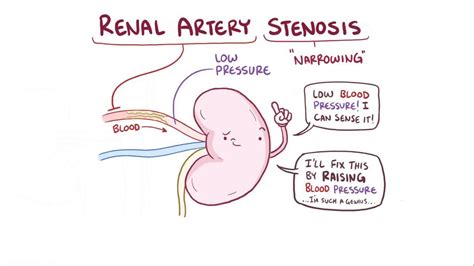
Lifestyle Modifications for Reducing Risk
Lifestyle modifications can significantly reduce the risk of developing kidney artery stenosis. A healthy diet that is low in saturated fats, cholesterol, and sodium can help manage blood pressure and cholesterol levels. Regular physical activity can help improve overall cardiovascular health and reduce the risk of developing conditions that contribute to kidney artery stenosis. Maintaining a healthy weight, managing stress, and getting enough sleep are also important for reducing the risk of the condition.Complications of Untreated Kidney Artery Stenosis

Long-Term Management and Follow-Up
Long-term management of kidney artery stenosis involves regular follow-up with a healthcare provider to monitor the condition and adjust treatment as necessary. This may include regular blood pressure checks, kidney function tests, and imaging tests to monitor the arteries. Making lifestyle changes and adhering to medication regimens as prescribed are crucial for managing the condition and preventing complications.Current Research and Future Directions
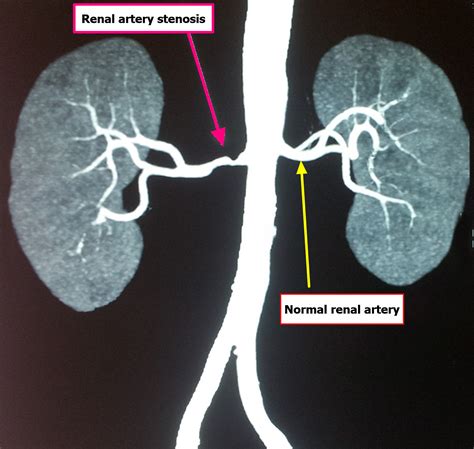
Emerging Therapies for Kidney Artery Stenosis
Emerging therapies for kidney artery stenosis include new medications that target the underlying causes of the condition, as well as innovative surgical techniques that minimize recovery time and reduce the risk of complications. Gene therapy and stem cell therapy are also being explored as potential treatments for kidney artery stenosis. These emerging therapies offer hope for improving outcomes and reducing the risk of complications associated with the condition.Conclusion and Final Thoughts
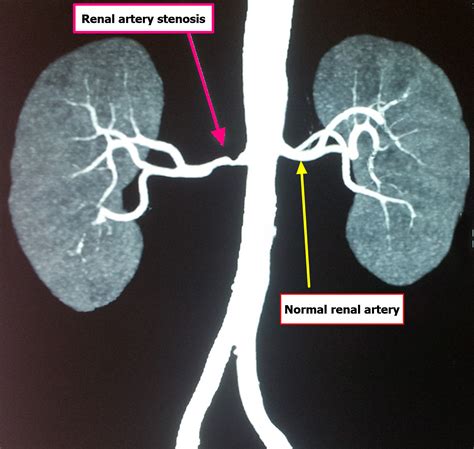
We invite you to share your thoughts and experiences with kidney artery stenosis in the comments below. If you found this article informative, please consider sharing it with others who may benefit from this information. Together, we can raise awareness about kidney artery stenosis and promote better health outcomes for those affected by the condition.
What are the symptoms of kidney artery stenosis?
+The symptoms of kidney artery stenosis can vary and may not always be apparent in the early stages. Common symptoms include high blood pressure that is difficult to control, decreased kidney function, and in severe cases, symptoms related to kidney failure.
How is kidney artery stenosis diagnosed?
+Diagnosing kidney artery stenosis involves a combination of physical examination, medical history, and diagnostic tests. Imaging tests such as Doppler ultrasound, CT angiography, and magnetic resonance angiography (MRA) are commonly used to visualize the renal arteries and confirm the diagnosis.
What are the treatment options for kidney artery stenosis?
+Treatment for kidney artery stenosis depends on the severity of the condition and the underlying cause. For mild cases, medication may be prescribed to control blood pressure and reduce the risk of further narrowing of the arteries. For more severe cases, angioplasty and stenting may be recommended.
Can kidney artery stenosis be prevented?
+Preventing kidney artery stenosis involves addressing the underlying risk factors. Quitting smoking, exercising regularly, and following a healthy diet can help reduce the risk of developing the condition. Managing conditions such as high blood pressure, diabetes, and high cholesterol through medication and lifestyle changes can also help prevent kidney artery stenosis.
What are the complications of untreated kidney artery stenosis?
+Untreated kidney artery stenosis can lead to serious complications, including kidney failure, which may require dialysis or a kidney transplant. High blood pressure that is difficult to control can also lead to heart disease, stroke, and other cardiovascular conditions.
